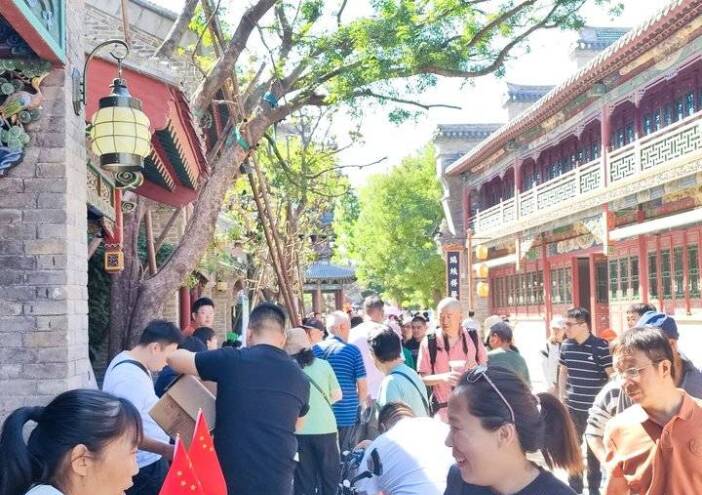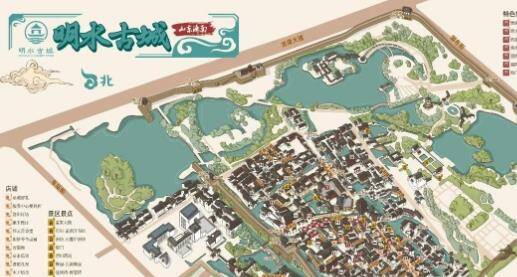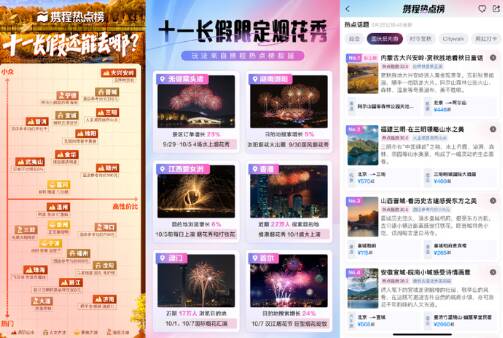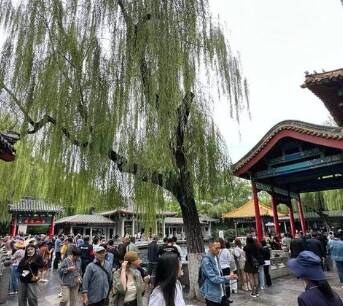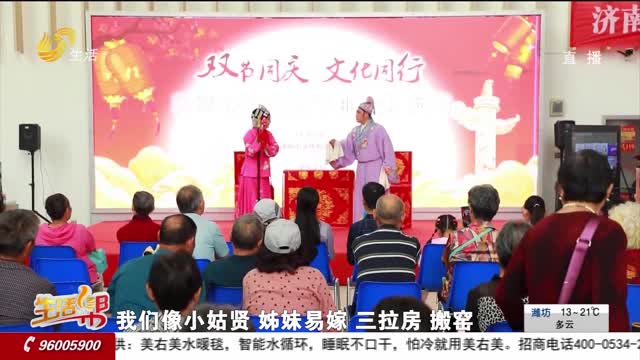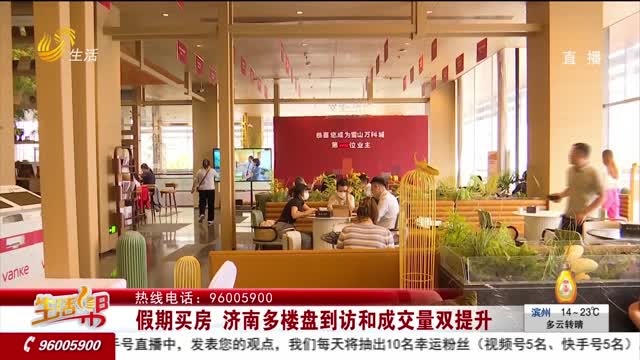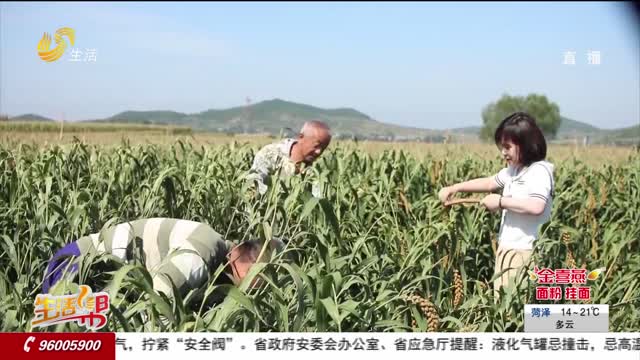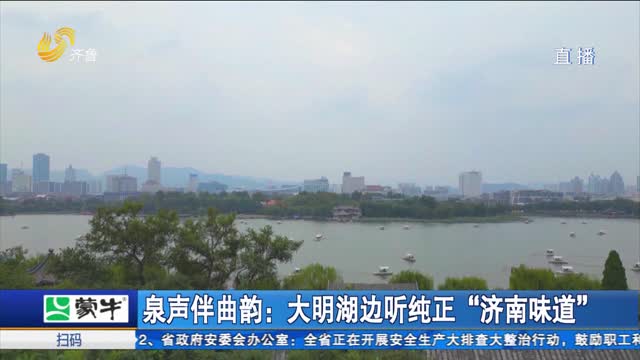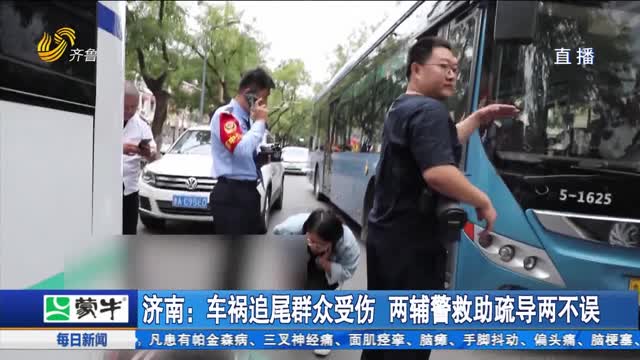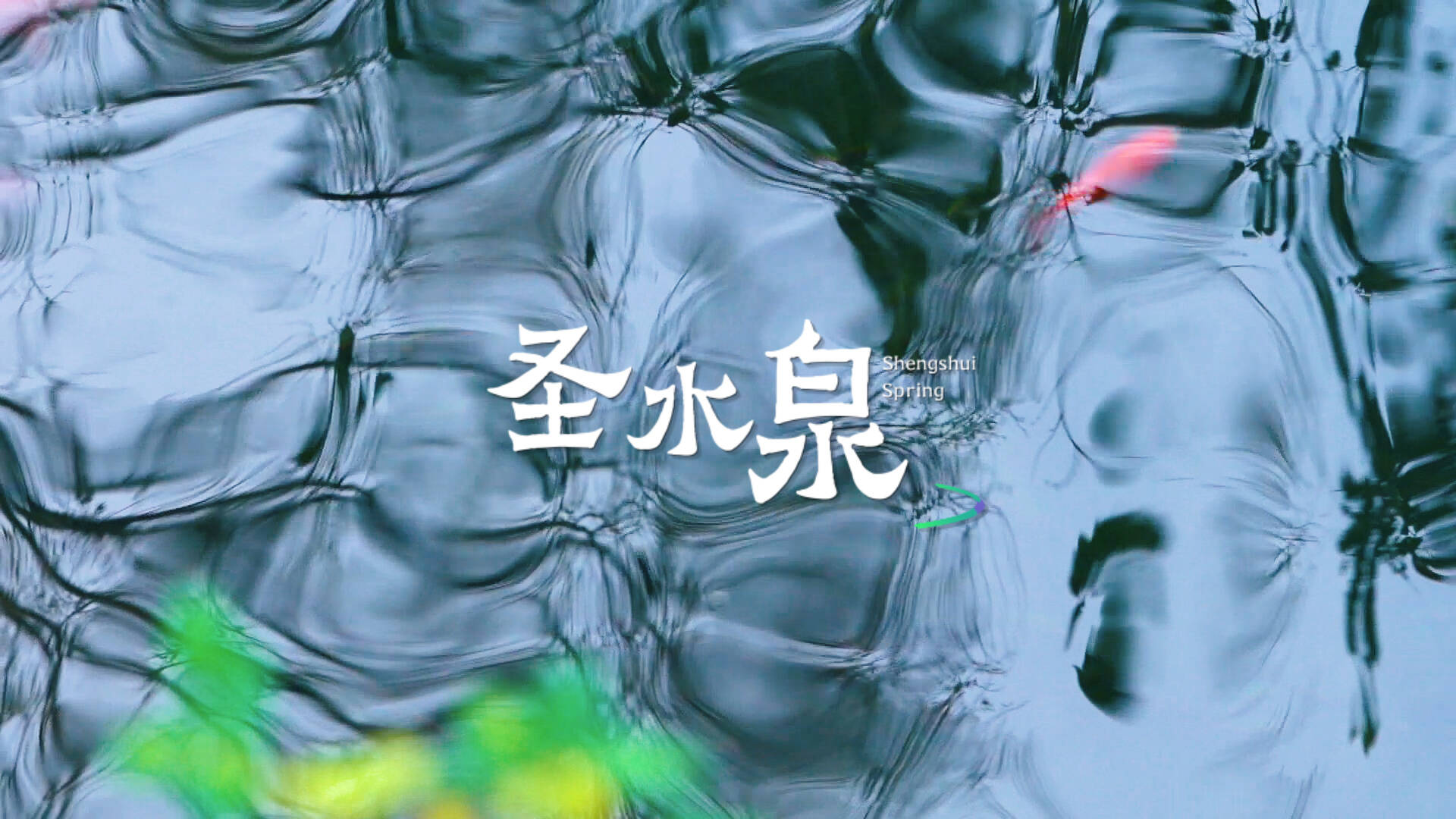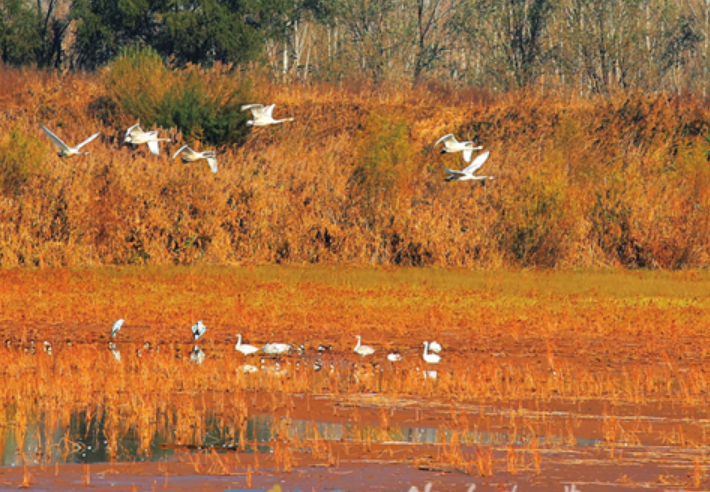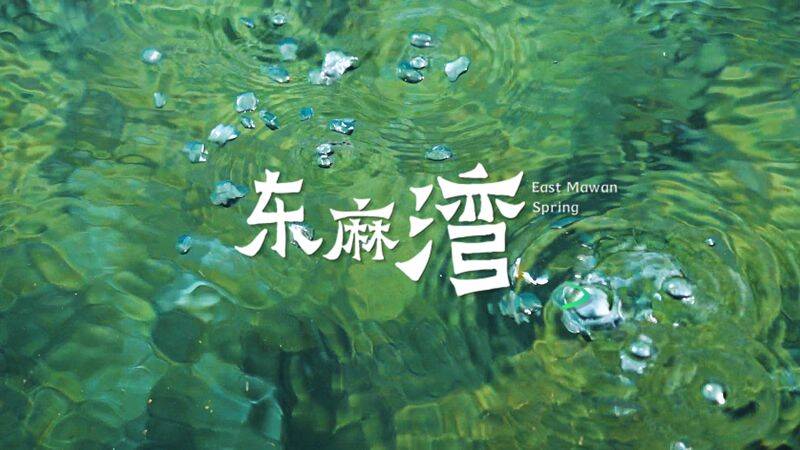Repairing the past, restoring our future
来源:中国日报英文版
2023-10-05 18:09:10
原标题:Repairing the past, restoring our future
来源:中国日报英文版
Original Headlines:Repairing the past, restoring our future
Source:中国日报英文版

Visitors appreciate rock carvings in Baodingshan, one of the five major clusters in Dazu district, Chongqing. JIANG DONG/CHINA DAILY
Cave temple protection in Chongqing requires effort, talent and pride in rich heritage
A massive array of stunning rock carvings are receiving ever more attention and protection as they regain their past glory.
Stone-paved stairs, steep but not long, lead one up to Beishan (Northern Mountain) that sits about 2 kilometers in the northwest of Dazu district, Chongqing.
A wooden corridor built against the rock wall then reveals itself.
Walking down the shaded path, hundreds of grottoes, as dense as beehives, hit the eye from the side wall.
The corridor has served as a shelter for the Buddha figurines, deities and animals that were delicately carved out of the rock as early as the Tang Dynasty (618-907).
The rudimentary wooden structure was built in the 1950s to shelter the exposed rock carvings, says Jiang Siwei, head of the Academy of Dazu Rock Carvings based in the district.
"It looks simple but is very practical, and keeps the grottoes from the elements," Jiang says, adding that a similar structure would have been in place when the grotto was first built in ancient times.
"Moreover, it blends in with the surroundings."
The Beishan cluster is part of the Dazu Rock Carvings, which were inscribed onto the UNESCO World Heritage List in 1999, the second grotto temple entry from China, after the Mogao Caves in Dunhuang, Gansu province.
Those grotto temples were believed to have been introduced into China from India via the Silk Road in the third century. As the Buddhist art form evolved, it absorbed local artistic elements.

A girl examines the Thousand-Armed Avalokitesvara, the goddess of mercy, in Baodingshan, Dazu district. JIANG DONG/CHINA DAILY
In addition to exquisite Buddha images and scriptures, characteristic of the country's grotto temples elsewhere, Dazu carvings highlight mundane scenes that urge people to be filial, conduct themselves properly and refrain from greed.
The carvings have also enjoyed a unique status for mixing Buddhism with indigenous beliefs like Confucianism and Taoism.
To date, more than 50,000 statues or carved images on the cliffs in the district have been put under protected cultural relic status, among which the most characteristic are the carvings in Beishan, Baoding, Nanshan, Shimen and Shizuan mountains.
Beishan boasts the largest rock carvings.
Wei Junjing, governor of Changzhou, was the initiator of the first carvings at the site in the late Tang Dynasty. More carvings were added under the auspices of officials, the gentry, scholars and monks. The cluster on its present scale was completed during the Southern Song Dynasty (1127-1279), consolidating the reputation of the statues for exquisite and elegant craftsmanship.
Archaeologists have proved that they showcased the development in the nation's folk Buddhist beliefs and stone carving art styles during the 9th to the 13th centuries.
Over the past decades, workers have tried to restore them to their original beauty.
Since mountains in the area have large quantities of sandstone, cracks have appeared due to geological movement, while the damp and hot southern climate results in underground water with natural chemicals, endangering the stone carvings and their carrier — the rock.
"You can see some crack lines and calcium precipitations have formed over parts of the cave walls," Jiang says.

Rock carvings at a cave temple in Beishan cluster in Dazu district, Chongqing. JIANG DONG/CHINA DAILY
Various approaches were tried to prevent the groundwater from encroaching on the carvings, such as digging diversionary tracts, but these efforts were in vain due to the complex water distribution in the mountains.
"It worked on the mountain water on the surface but failed to keep off the water flowing from the distant mountain area," Jiang explains.
It was not until 1992, when they ingeniously came up with the idea of digging holes and tunnels right below the caves to divert water from the temple areas, that the water erosion problems have been effectively addressed.
Since then, they've kept close tabs on any new cracks appearing, the biggest threat to those rock carvings.
"They affect the stability of the rock body," Jiang explains.
The initial observations used rough but ready methods, such as measuring the lengths of those cracks.
In 2015, they started to work on caves where the cracks were classified as hazardous.
"We have to make predictions over the development of any cracks on the cave, like what is the borderline point that would comprise steadiness and under what conditions the cave might collapse," Jiang says.
"It requires calculations, and equipment monitoring and practical experience before coming up with intervention measures and removing the hazards," he says.

Local restorers work on rock carvings at Xiaofowan site in Dazu. JIANG DONG/CHINA DAILY
Cave No 168 is one example and it took three years to finish reinforcement procedures.
The Institute of Geology and Geophysics, the Chinese Academy of Sciences, was invited to survey the land first before operations were carried out.
"The theoretical calculation alone is not enough, since many problems can arise during practice," Jiang says.
For example, exactly how much grouting pressure should be applied to fill the cracks in the rocks needs constant experimentation.
"If it's too small, it can't reach certain fine cracks, but if it's too big, new cracks will open," Jiang says, adding that the time for the grout to solidify between the rocks also needs to be observed and modified.
Cave No 168 has had a concrete beam and bolt system placed to secure its thin roof, while an advanced electronic monitoring system has been installed to keep track of changes, such as crack growth, wall pressure and air, over the following five years in the cave.
All the data are transported to an electronic monitoring center at the Academy of Dazu Rock Carvings.
The center was established in 2012 and has been equipped with the advanced monitoring system since 2019. It has received data on 70 indicators of artifacts and surrounding environment from all major stone carvings protection sites across Dazu.

Rock carvings at a cave temple in Beishan cluster in Dazu district, Chongqing. JIANG DONG/CHINA DAILY
"Some data have to be acquired by our inspectors," says Feng Xuemei, an officer who has been working with the center for five years.
All of the previous data have been collected and moved to the new system, which has now amassed more than 7 million data entries.
"One of our responsibilities is to compare new data with the past to ensure everything is all right," Feng says.
Caps have been set on tourist numbers and the environment, ranging from humidity, temperature to air quality.
"When any anomaly comes up, we will assign personnel to the site and conduct an intervention," Feng says.
One of the most prominent restoration projects involves an eight-year restoration of the Thousand-Armed Avalokitesvara, the goddess of mercy (known as Guanyin in Mandarin), in Baodingshan, one of the five major rock carvings sites in Dazu.
The statue, a stone carving with gold plating and color elements, had suffered damage, ranging from broken fingers and peeled-off gold foil, after it stood the test of time for more than 800 years.
"Observed at close quarters, it looked pocked with scars," recalls Chen Huili, director of the academy's conservation center, who led the restoration project.
She and her team did a good deal of research and experiment before settling on the repair materials and methods.

Workers carry heavy segments at the Shuchengyan site in the district's Zhongao town. JIANG DONG/CHINA DAILY
"They have to best fit the Guanyin statue, which is of sandstone texture, as well as take into account high temperature and humid environment," Chen explains, adding that every decision and move were made based on studies of the statue and related history and scientific papers.
For example, she and her team used to go to Sichuan, Hebei and Shandong provinces to study rock carvings, trying to draw inferences for mending the statue's broken right hand.
"It was repaired by the ancients, but was inconsistent to the original," Chen says.
She then proposed to create a detachable hand based on the symmetric features of the statue, because there is still one minor inconsistency in the angle of the remaining bracelet buckle.
"Therefore, future fixes can be easier to be applied, when more is discovered," Chen says.
Now, the restored statue looks solemn and shines, and has become a major attraction.
The Academy of Dazu Rock Carvings has also worked with international organizations to repair local rock carvings.
At Shuchengyan site in the district's Zhongao town, a cave temple has recently finished preliminary restoration, thanks to joint efforts between a cultural heritage cluster from Italy and the Academy of Dazu Rock Carvings.
The project started in 2018, and a series of experiments and analysis were then conducted by both sides on gold foil, paint, rock and microorganisms, as well as repairing techniques, for a year before restoration eventually kicked in.
"The temple was very popular in the old times and visited a lot by locals," says Ruan Fanghong, an official with the project.
As a result, many rock carvings were damaged.
The two sides applied synthetic enzymes to remove impurities from the paint, and used polyvinyl alcohol to paste the gold foils back.
"Now, several years have passed, and the restored parts have maintained very well," Ruan says.
In the last decade, 246 million yuan ($33.1 million) has been put into 24 restoration projects in Dazu, according to local authorities.
In addition to the major rock carving sites, a comprehensive conservation and research project has been launched since 2020 to cover more than 60 medium- and small-sized sites.
According to the Dazu academy's plan, about 700,000 yuan will be allocated for the renovation of each site. By 2025, all potential hazards to these medium- and small-sized sites will be addressed.
After years of hard work they are on the homestretch of completion, Chen says.
"We'll lay more of a focus on restoring them to the original beauty in the future, while keeping them under close watch for their safety."
想爆料?请登录《阳光连线》( http://minsheng.iqilu.com/)、拨打新闻热线0531-66601253,或登录齐鲁网官方微博(@齐鲁网)提供新闻线索。齐鲁网广告热线0531-66601253,诚邀合作伙伴。
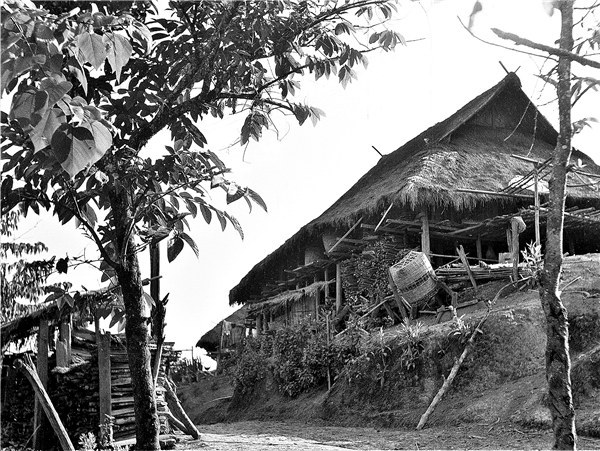
The peak of his profession
- The last long house in Yanuo village, in Jinghong of Yunnan province, in the 1980s, which no longer exists. [Photo provided to Chi...[详细]
- 中国日报网英文版 2023-10-05
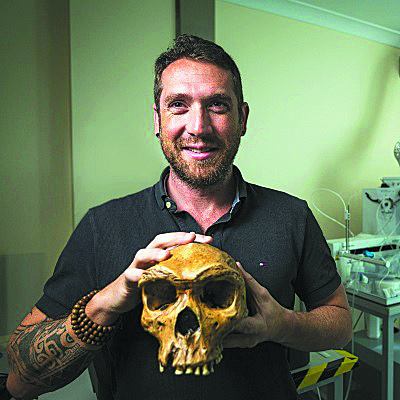
Academic digs deep to uncover our past
- From the outside, the cave at Tam Pa Ling in northern Laos does not look impressive.He has been working on and off at Tam Pa Ling ...[详细]
- 中国日报英文版 2023-10-05

Tracing the steps of early migration
- The thick 7-meter-deep sediment that forms the Tam Pa Ling cave floor. KIRA WESTAWAY/FOR CHINA DAILY Fossil finds suggest ...[详细]
- 中国日报英文版 2023-10-05
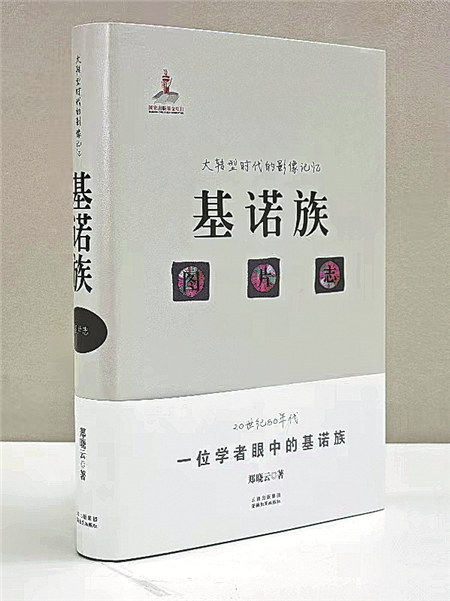
Picturing a life that's long disappeared to keep it in the present
- Jinuo Group is a visual record of the Jinuo ethnic group in the 1980s.With his 40-odd years of field research on the Jinuo ethn...[详细]
- 中国日报英文版 2023-10-05
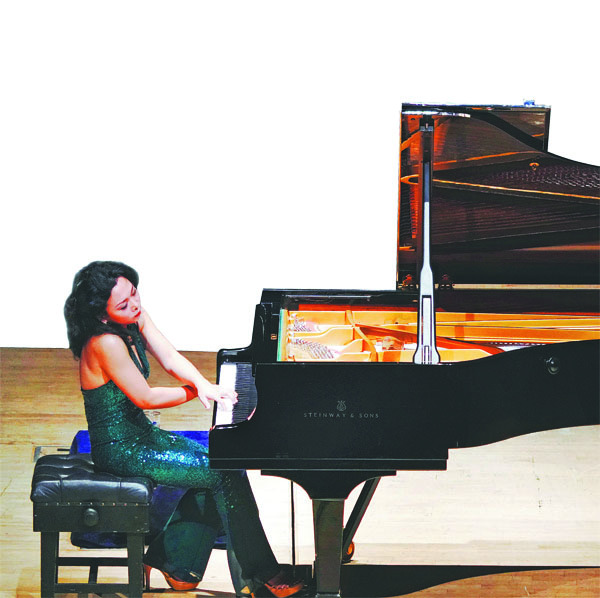
Music that brims with the joys of spring
- Xiao Di performs during a solo concert at Birmingham Town Hall in 2019, when she released her Femmes de Legende album that celebra...[详细]
- 中国日报英文版 2023-10-05

Beijing's Central Axis takes center stage with World Heritage bid
- The Altar of the God of Agriculture stands near Beijing's Central Axis as a testament to China's rich farming culture.Public activ...[详细]
- 中国日报英文版 2023-10-05

Maestro brings ancient Chinese sounds to London
- Pipa and guqin virtuoso Cheng Yu. [Photo provided to China Daily] During the afternoon of the second Saturday of every sec...[详细]
- 中国日报英文版 2023-10-05
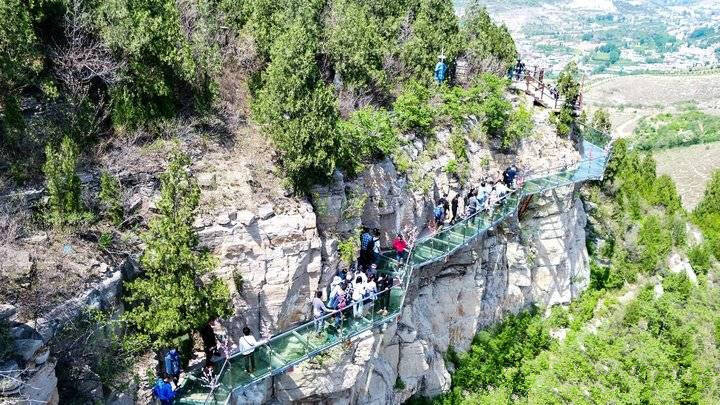
外地游客明显增多!网红济南带火距离市区20分钟车程的景区
- [详细]
- 齐鲁壹点 2023-10-05

济南加强住房租赁企业及从业人员信用监管 信用咋样 扫码可查
- [详细]
- 济南日报 2023-10-05
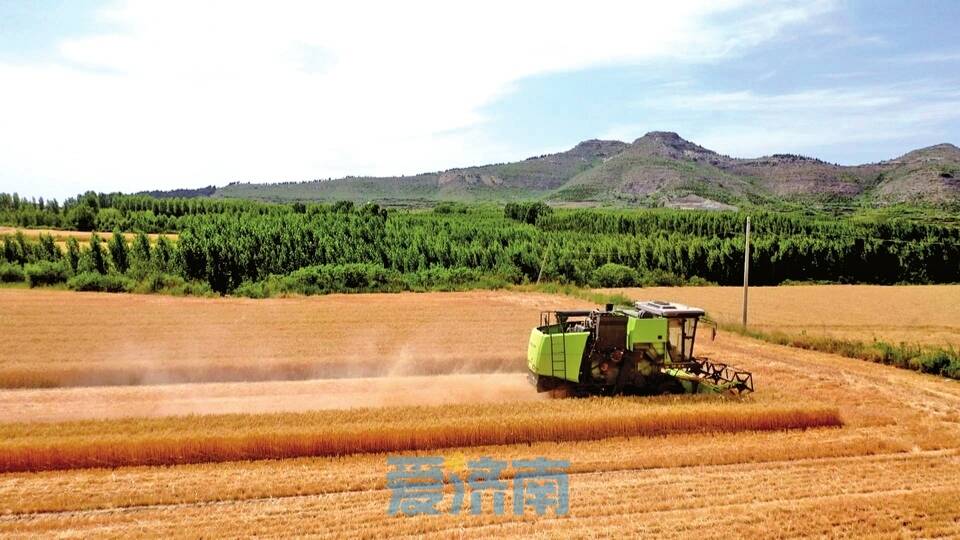
济南市入库种质资源近十三万份 现代种业激活乡村振兴“芯”动能
- [详细]
- 济南日报 2023-10-04
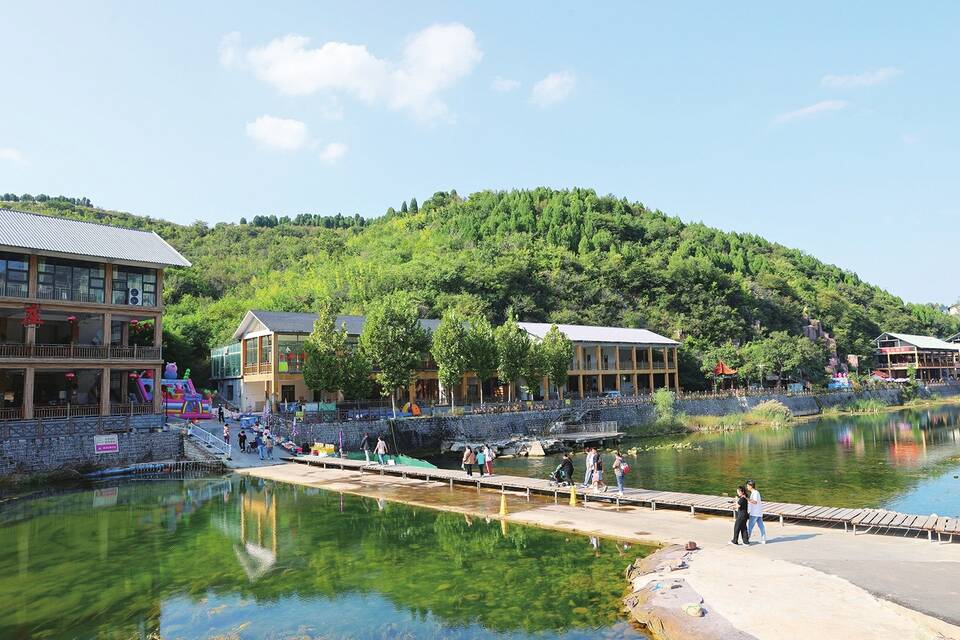
济南:文明旅游为假日美景增彩
- [详细]
- 济南日报 2023-10-04
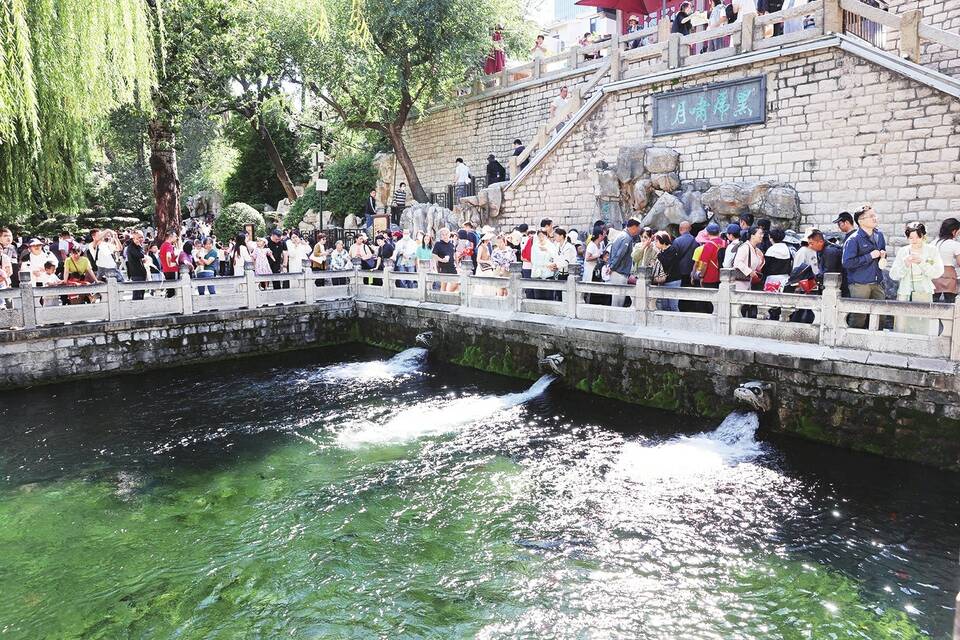
文化味浓 体验感好 潮流范足 泉城假日文旅市场热度上扬
- [详细]
- 济南日报 2023-10-04
这家济南企业产业模式国内“独一份”
- 9月21日,海能未来技术集团股份有限公司发布《回购股份方案公告》。作为济南第2家北交所上市公司,海能技术17年来专注于科学仪器事业,凭借...[详细]
- 大众网 2023-10-03
